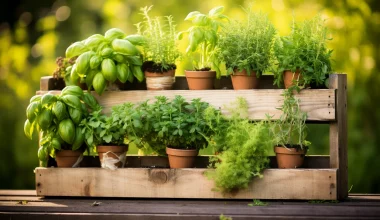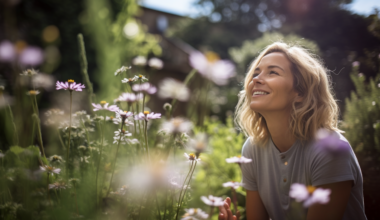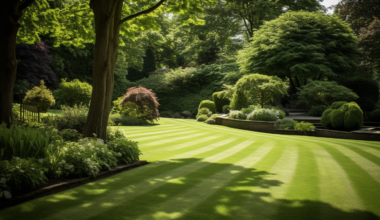- Introduction: Embracing the ShadeThe British summer can sometimes be surprisingly warm, turning gardens into sun-drenched spaces. While this is wonderful for sun-loving plants, it can make the garden less comfortable for people. The concept of creating garden shade isn’t just about escaping the heat; it’s about adding a new dimension to your outdoor space, providing shelter, and enhancing aesthetics. In this guide, we’ll explore various methods for creating garden shade, making your garden a perfect retreat.1. Understanding the Importance of ShadeShade in a garden is not just about comfort. It serves multiple purposes:a. Protecting PlantsCertain plants require protection from direct sunlight. Creating shaded spots helps these plants thrive.b. Energy EfficiencyShade near windows can reduce the need for air conditioning, providing energy efficiency for your home.c. Enhancing AestheticsProper shading can add visual interest to the garden, creating delightful contrasts and hidden spots to discover.2. Types of Garden ShadeGarden shade can be natural or artificial. Each has its charm and functionality.a. Natural ShadeTrees, shrubs, and tall plants can create natural shade. Vines growing on pergolas or arches can provide dappled sunlight.b. Built Shade StructuresThis includes pergolas, gazebos, umbrellas, and shade sails. They can be tailored to your garden’s design.3. Selecting the Right Trees and Shrubs for ShadeChoosing the right trees and shrubs is crucial for creating the desired effect.a. Consider Growth HabitsSome trees grow tall and provide high shade, while others have a broader canopy. Consider the space and the type of shade required.b. Think About MaintenanceSome trees may require regular pruning or shed a lot of leaves. Choose ones that suit your maintenance preferences.c. Seasonal ChangesSome trees lose leaves in winter, providing summer shade but allowing winter sun. Others remain evergreen, providing constant cover.4. Utilising Shade StructuresBuilt shade structures can be both functional and decorative.a. Pergolas and ArboursThese structures can support climbing plants, or fabric can be added for more shade. They work well over seating areas or paths.b. GazebosA gazebo is an enclosed structure providing more substantial shade and shelter. It can become a focal point in the garden.c. Shade SailsThese modern, versatile shades come in various colours and shapes, providing adjustable shade options.5. Creating Shade Through Garden FurnitureStrategic placement of furniture can create additional shaded spots.a. Umbrellas and ParasolsGarden umbrellas can be moved as needed, providing flexible shade.b. Furniture With Built-in ShadeSome garden furniture comes with canopies or shades, providing a built-in solution.6. Considering the Impact of Shade on Other PlantsCreating garden shade will impact the sunlight received by other plants.a. Understanding Sun RequirementsDifferent plants require different levels of sunlight. Consider the needs of surrounding plants when creating shade.b. Considering Water NeedsShaded areas may retain moisture longer. Adjust watering accordingly.7. Exploring Creative Shade SolutionsCreativity in shading can enhance the garden’s aesthetics and functionality.a. Mixing Natural and Built ShadeCombining trees with shade structures can create layered, dynamic shade.b. Incorporating Water FeaturesWater features can add to the cooling effect of shade, enhancing the retreat-like feel.Conclusion: Enjoying the Comfort of Garden ShadeCreating garden shade is about more than just staying cool. It’s about adding depth, intrigue, and comfort to your outdoor space. From the gentle shade of a leafy tree to the stylish cover of a modern shade sail, the options are diverse and adaptable to your garden’s style.Embrace the art of creating garden shade and transform your garden into a cool retreat where every moment outside is a pleasure, regardless of the summer heat. In the UK, where every sunny day is a celebration, having a shaded spot in your garden ensures that you can enjoy the outdoors to the fullest. Remember, a shaded garden is not just a cool garden; it’s a garden filled with possibilities and charm.
- 1. Understanding the Importance of Shade
- 2. Types of Garden Shade
- 3. Selecting the Right Trees and Shrubs for Shade
- 4. Utilising Shade Structures
- 5. Creating Shade Through Garden Furniture
- 6. Considering the Impact of Shade on Other Plants
- 7. Exploring Creative Shade Solutions
- Conclusion: Enjoying the Comfort of Garden Shade
Introduction: Embracing the Shade
The British summer can sometimes be surprisingly warm, turning gardens into sun-drenched spaces. While this is wonderful for sun-loving plants, it can make the garden less comfortable for people. The concept of creating garden shade isn’t just about escaping the heat; it’s about adding a new dimension to your outdoor space, providing shelter, and enhancing aesthetics. In this guide, we’ll explore various methods for creating garden shade, making your garden a perfect retreat.
1. Understanding the Importance of Shade
Shade in a garden is not just about comfort. It serves multiple purposes:
a. Protecting Plants
Certain plants require protection from direct sunlight. Creating shaded spots helps these plants thrive.
b. Energy Efficiency
Shade near windows can reduce the need for air conditioning, providing energy efficiency for your home.
c. Enhancing Aesthetics
Proper shading can add visual interest to the garden, creating delightful contrasts and hidden spots to discover.
2. Types of Garden Shade
Garden shade can be natural or artificial. Each has its charm and functionality.
a. Natural Shade
Trees, shrubs, and tall plants can create natural shade. Vines growing on pergolas or arches can provide dappled sunlight.
b. Built Shade Structures
This includes pergolas, gazebos, umbrellas, and shade sails. They can be tailored to your garden’s design.
3. Selecting the Right Trees and Shrubs for Shade
Choosing the right trees and shrubs is crucial for creating the desired effect.
a. Consider Growth Habits
Some trees grow tall and provide high shade, while others have a broader canopy. Consider the space and the type of shade required.
b. Think About Maintenance
Some trees may require regular pruning or shed a lot of leaves. Choose ones that suit your maintenance preferences.
c. Seasonal Changes
Some trees lose leaves in winter, providing summer shade but allowing winter sun. Others remain evergreen, providing constant cover.
4. Utilising Shade Structures
Built shade structures can be both functional and decorative.
a. Pergolas and Arbours
These structures can support climbing plants, or fabric can be added for more shade. They work well over seating areas or paths.
b. Gazebos
A gazebo is an enclosed structure providing more substantial shade and shelter. It can become a focal point in the garden.
c. Shade Sails
These modern, versatile shades come in various colours and shapes, providing adjustable shade options.
5. Creating Shade Through Garden Furniture
Strategic placement of furniture can create additional shaded spots.
a. Umbrellas and Parasols
Garden umbrellas can be moved as needed, providing flexible shade.
b. Furniture With Built-in Shade
Some garden furniture comes with canopies or shades, providing a built-in solution.
6. Considering the Impact of Shade on Other Plants
Creating garden shade will impact the sunlight received by other plants.
a. Understanding Sun Requirements
Different plants require different levels of sunlight. Consider the needs of surrounding plants when creating shade.
b. Considering Water Needs
Shaded areas may retain moisture longer. Adjust watering accordingly.
7. Exploring Creative Shade Solutions
Creativity in shading can enhance the garden’s aesthetics and functionality.
a. Mixing Natural and Built Shade
Combining trees with shade structures can create layered, dynamic shade.
b. Incorporating Water Features
Water features can add to the cooling effect of shade, enhancing the retreat-like feel.
Conclusion: Enjoying the Comfort of Garden Shade
Creating garden shade is about more than just staying cool. It’s about adding depth, intrigue, and comfort to your outdoor space. From the gentle shade of a leafy tree to the stylish cover of a modern shade sail, the options are diverse and adaptable to your garden’s style.
Embrace the art of creating garden shade and transform your garden into a cool retreat where every moment outside is a pleasure, regardless of the summer heat. In the UK, where every sunny day is a celebration, having a shaded spot in your garden ensures that you can enjoy the outdoors to the fullest. Remember, a shaded garden is not just a cool garden; it’s a garden filled with possibilities and charm.






